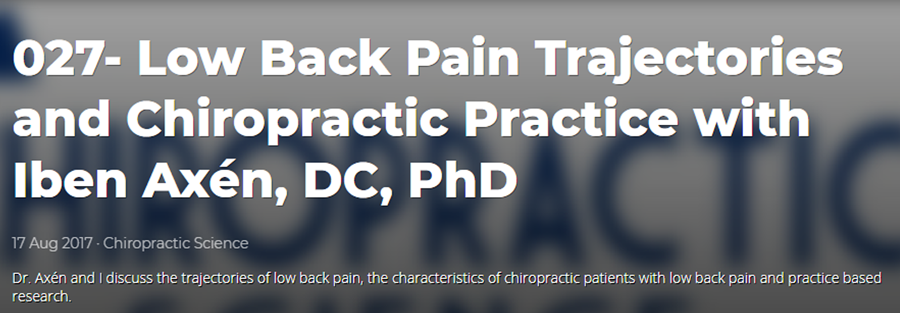Contrasting Real Time Quantitative Measures to Patients
Contrasting Real Time Quantitative Measures (Weekly SMS) to Patients’ Retrospective Appraisal of Their One-year’s Course of Low Back Pain; A Probing Mixed-methods Study
SOURCE: Chiropractic & Manual Therapies 2019 (Feb 26); 27: 12
Lise Hestbaek, Cornelius Myburgh, Henrik Hein Lauridsen, Eleanor Boyle, and Alice Kongsted
Department of Sports Science and Clinical Biomechanics,
University of Southern Denmark,
Odense, Denmark.
BACKGROUND: Due to the recurrent nature of low back pain (LBP), the traditional concepts of cure and recovery are challenged, and investigating the course rather than status at fixed time-points may help us understand prognosis as well as treatment effect. However, methods of frequent measuring still need development and validation. Therefore, this study aims to evaluate the agreement between continuous, quantitative self-assessment (weekly SMS) of the course of LBP over a one-year period and qualitatively derived retrospective patient self-appraisal of the same time-period.
METHODS: Participants were 32 subjects with LBP from primary care. The quantitative measures consisted of weekly SMS questions for one-year about pain intensity, days with LBP, and activity limitations for that week. For each subject, the weekly responses were graphed and categorized into categories based on intensity, variation and overall change patterns. Qualitative measures were based on semi-structured telephone interviews one-year after a consultation for LBP, where two coders independently categorized the self-appraisal of LBP course into the same predefined categories as the SMS-based trajectories. Furthermore, patients’ perceived overall recovery was related to variation patterns from SMS track.
RESULTS: There was perfect agreement for 48% in the pain intensity domain, 53% in the variation domain and 63% in the change pattern domain. Most of the discordant cases were classified in neighboring categories with the majority relating to fluctuating patterns. The self-perceived overall recovery status seemed to be reflected quite well by the quantitative measures of pain intensity and days with pain in this study.
There are more articles like this @ our:


